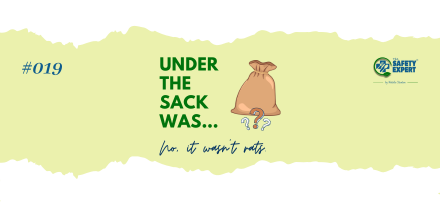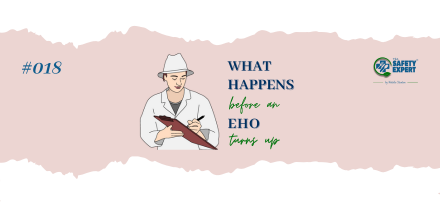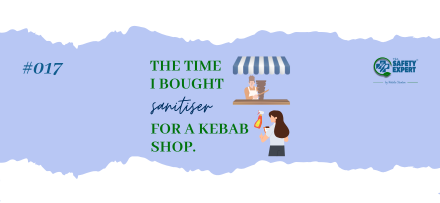“It’s sunstroke,” they said. Spoiler: it wasn’t.
Table of Contents
EHO Story 📩
This one goes way back, long before I was an Environmental Health Officer and food safety trainer, back when I was just a 13-year-old on holiday in Spain.
At the time, I was doing my Level 2 Food Safety course at school and I was obsessed with it. Cross-contamination, bacteria types, symptoms of food poisoning, I lapped it up.
And as it turns out, this knowledge came in very handy.
We were staying at an all-inclusive hotel. Buffet-style service, fresh food regularly being dumped on top of old trays, lukewarm “hot” options, that kind of thing. My family naively just got stuck in.
My brother was the first to go down.
He spent the entire two-week holiday in bed.
I followed a few days later, just in time for the flight home: shivering in the check-in queue, feverish and curled up on the cool stone floor of the airport.
I was still unwell when we got back.
Then my mum came down with it and was ill for another two weeks.
The bit that’s stayed with me the most was what happened at the hotel.
My dad went down to reception to let them know two of us were sick. There were other guests queueing to do the same. It was clearly widespread.
And the hotel’s response?
“It’s sunstroke.” 😂
My dad actually came back to the room and told us this, like it made sense.
I looked up at him from bed and said with complete confidence:
“It’s not sunstroke. It’s food poisoning. I’ve learnt all the symptoms.”
I went straight home and pulled out my Level 2 notes, trying to work out exactly which bacteria it might’ve been.
Did my parents listen to me?
Of course not. I was 13.
While we didn’t get it confirmed as food poisoning. I know it wasn’t sunstroke. And the likely cause was food poisoning.
🦠 Food Safety Tip: Buffets can be a hotspot for bacteria
Buffets can be a “breeding ground” for bacteria if not managed properly.
Here’s what to consider:
✔️ Hot food needs to be hot, cold food needs to be cold: Hot food should be kept above 63°C, cold food below 8°C (ideally below 5°C). Anything in between is the danger zone. (N.B. There are some exemptions for hot and cold holding, but if used these must be properly planned and covered in a HACCP system.)
✔️ Topping up trays = trouble: Putting fresh food on top of old means the bottom layer often sits in the danger zone for hours.
✔️ Track, rotate, refresh: Buffets need a system. Timed checks, temperature logs, and full tray changes, not just top-ups.
The Serious Lesson
Buffets can be done safely but only when the risks are properly understood and actively managed.
The hotel in this story wasn’t unlucky. It wasn’t “just one of those things.” It was likely a breakdown in basic food safety that affected multiple guests for days.
The worst part? They didn’t take it seriously.
They blamed the sun. Shrugged it off. Missed the chance to fix a potential problem.
Whether you’re running a buffet, managing a team, or working in operations, the principle’s the same:
Take guest feedback seriously. Investigate it when something may have gone wrong. And don’t ignore the quiet voice in the room that might just be right.
Even if they’re 13.
Ever spotted a food safety issue on holiday?
Subscribe to my newsletter!
Get useful food safety tips and special offers directly to your inbox (you can unsubscribe at any time).




